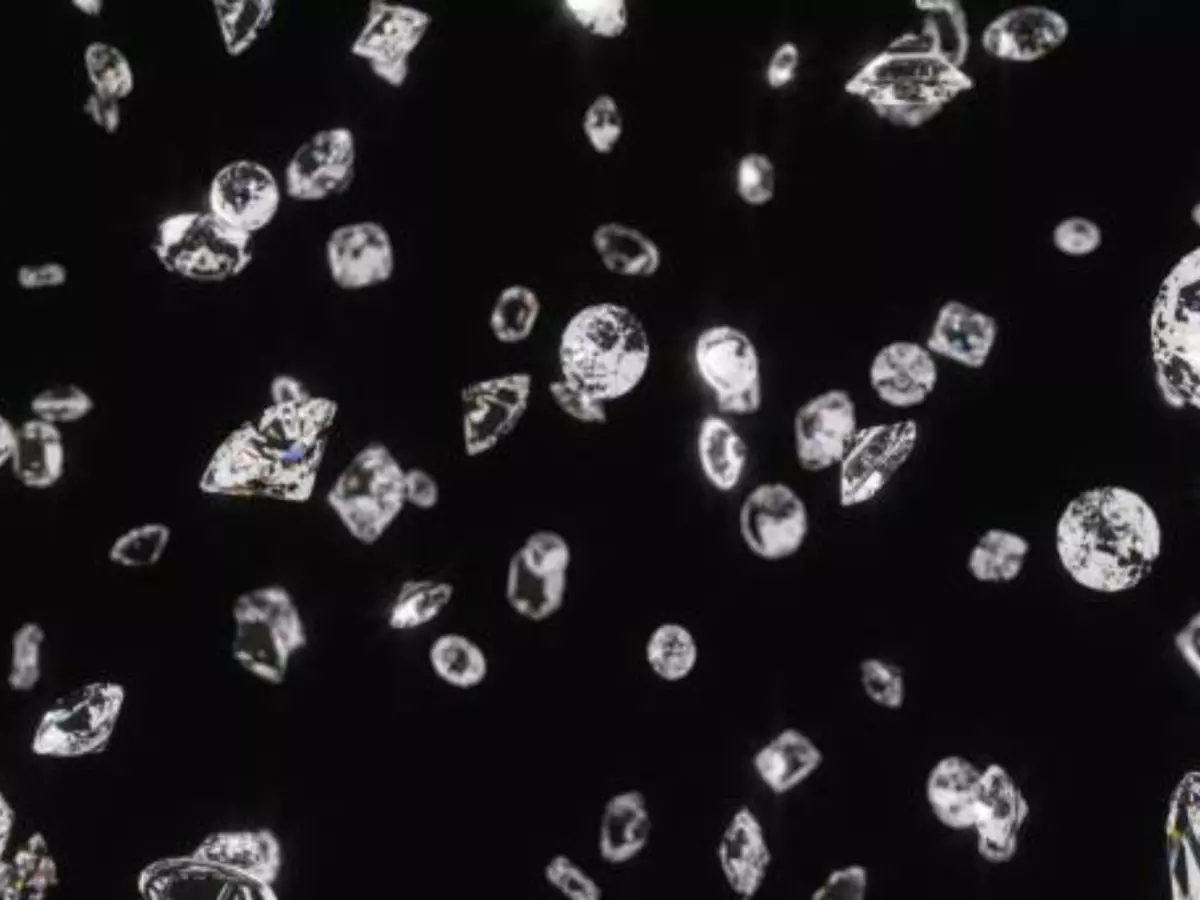Why Does It Rain Diamonds On Neptune And Uranus?
Uranus and Neptune are both ice giants and also share a similar blue tint in terms of their appearance. For long, scientists have suspected that it rains diamonds on these planets

Two ice giants in our solar system experience diamond rain. Nope, we are not making this up. On Neptune and Uranus, it rains diamonds!
While this is a striking reminder of how ordinary diamonds are in the greater scheme of this universe, it also sheds light on how elusive most terrains remain for humanity.
Uranus and Neptune are both ice giants and also share a similar blue tint in terms of their appearance. For long, scientists have suspected that it rains diamonds on these planets. While we wait for mind-blowing findings from NASA's new James Webb Space Telescope, here's why it rains diamonds on Uranus and Neptune.
 iStock
iStock
Why it rains diamonds on ice giants
Both Uranus and Neptune appear blue in colour owing to the presence of methane in their atmospheres. Methane is made up of carbon. Why is this important, you wonder? It's these same carbon atoms that are crushed into diamonds in the atmospheres of these planets owing to raging temperatures and intense pressure conditions.
Also read: How Bizarre Is Our Solar System? Here's One Crazy Fact About Every Planet
 Uranus and Neptune / NASA
Uranus and Neptune / NASA
The phenomenon was recently brought to light again after astrophysicist Naomi Rowe-Gurney spoke about it in a podcast hosted by NASA. "Methane has carbon in it and that carbon can occur by itself and also be crushed by the immense pressures that happen, like, deep in the atmosphere," said Rowe-Gurney. "And inside the planet, when it gets really hot and really dense, these diamonds form and accumulate, and then they become even heavier. And that means that they kind of rain down in the atmosphere," the podcast's transcript added.
 Uranus /NASA
Uranus /NASA
Already feeling greedy? Lucky for both the planets, no humans can ever survive in the conditions on Uranus and Neptune. Both the planets have no surface - Uranus is essentially a planet made up of swirling fluids, while Neptune's atmosphere extends to great depths, making it unbearable for humans.
Also read: Bizarre Study Says Planets May Be Used As Giant Spaceships To Escape Sun's Wrath
The idea of a diamond rain on Uranus and Neptune was first put forward by Marvin Ross of Lawrence Livermore National Laboratory in a 1981 article published in Nature titled "The Ice Layer of Uranus and Neptune¡ªDiamonds in the Sky?"
 Neptune / NASA
Neptune / NASA
Ross' suggestion, as highlighted by American Scientist, is that high pressures and high temperatures inside the ice giants forces carbon and hydrogen atoms of methane to separate, squeezing them into a diamond structure.
Also read: Jupiter Cannibalised Baby Planets To Become Our Solar System's Largest Planet
Did you know it rains diamonds on Uranus and Neptune? Let us know what you think in the comments below. For more in the world of technology and science, keep reading Indiatimes.com.
References
Bock, M. (2022, July 1). Gravity Assist: It¡¯s Raining Diamonds on These Planets. NASA.
On Neptune, It¡¯s Raining Diamonds. (2018, August 16). American Scientist.
